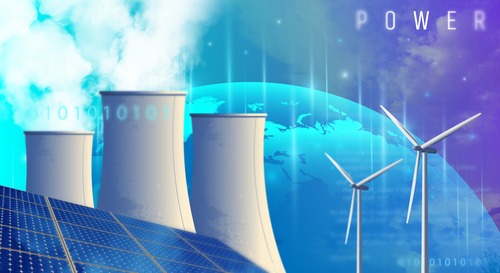NARUC report analyzes utility filing trends to determine nuclear energy efforts

With the release of a report titled “Nuclear Generation in Long-Term Utility Resource Planning,” the National Association of Regulatory Utility Commissioners (NARUC) this week reviewed 17 utility integrated resource plan (IRP) filings to hone in on trends moving nuclear energy in the United States.
“Understanding the potential of advanced nuclear is incredibly important for state regulators as nuclear energy is a key steppingstone in reaching clean energy and decarbonization goals,” said Georgia Public Service Commissioner Tim Echols, co-chair on NARUC’s Subcommittee on Nuclear Issues – Waste Disposal and the Department of Energy-NARUC Nuclear Energy Partnership. “It gives regulators the opportunity to see firsthand to what extent utilities are considering advanced nuclear as a part of their energy generation, enhancing the ability to prepare for regulatory needs in this area.”
Among those notes meant to assist state regulators were essentially three overarching trends identified between August 2019 and March 2023:
- While most regulated utilities were aware of advanced nuclear technologies, the anticipated deployment dates for many fall outside the window of their IRPs, and some have not included advanced nuclear in their plans due to uncertainties around the technology’s maturity, costs, and financial risks, along with state-level prohibitions on the construction of new nuclear facilities.
- Most utilities proposed keeping their existing nuclear resources online for reliability and decarbonization purposes and have cited their usefulness to employment, local economies, and reliability as well in considering extensions
- PacifiCorp, Idaho Power, Duke Energy Carolinas, Duke Energy Progress, and the Tennessee Valley Authority all explicitly included advanced nuclear in their IRPs.
NARUC stated that clean energy demands and decarbonization goals have put existing nuclear generation and the potential for more advanced methods at the head of discussions related to the energy transition. Advanced, in this case, refers to modern reactors that, while based on similar principles to older reactors, also provide improved load-following capabilities, modularity, small land-use footprints, new safety features, and low operating costs. Those technologies are still relatively new, but NARUC and other groups hope that as the technologies mature, electric utilities may consider their use.
IRPs are used by regulated utilities to convey their long-term generation investment decisions to state utility regulators, so they provide insights into utility’s thoughts on viable options.
